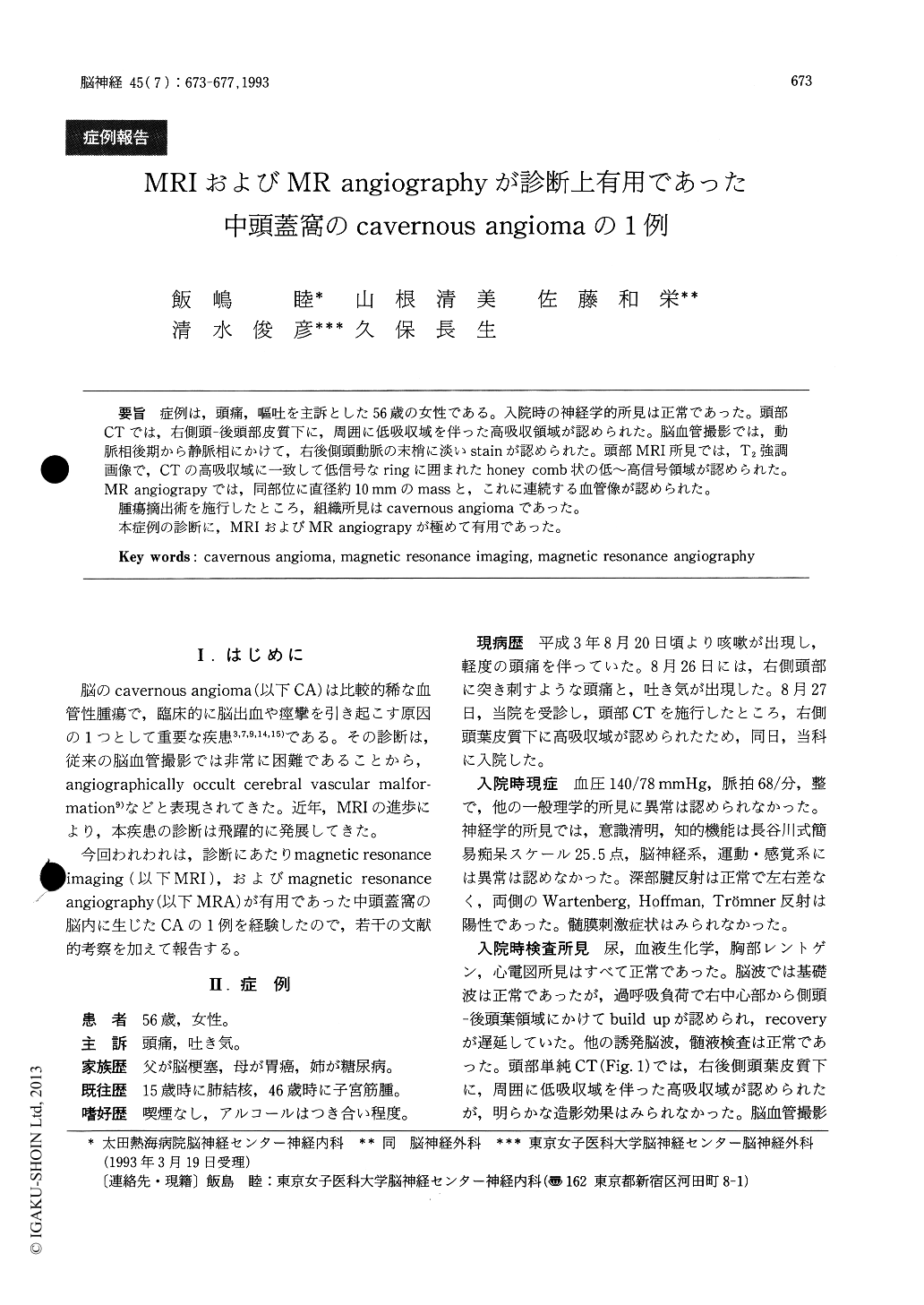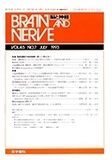Japanese
English
- 有料閲覧
- Abstract 文献概要
- 1ページ目 Look Inside
症例は,頭痛,嘔吐を主訴とした56歳の女性である。入院時の神経学的所見は正常であった。頭部CTでは,右側頭‐後頭部皮質下に,周囲に低吸収域を伴った高吸収領域が認められた。脳血管撮影では,動脈相後期から静脈相にかけて,右後側頭動脈の末梢に淡いstainが認められた。頭部MRI所見では,T2強調画像で,CTの高吸収域に一致して低信号なringに囲まれたhoney comb状の低〜高信号領域が認められた。MR angiograpyでは,同部位に直径約10mmのmassと,これに連続する血管像が認められた。
腫瘍摘出術を施行したところ,組織所見はcavemous angiomaであった。
本症例の診断に,MRIおよびMR angiograpyが極めて有用であった。
We reported a case of cavernous angioma in the middle cranial fossa, which was diagnosed with magnetic resonace imaging (MRI) and magnetic resonance angiography (MRA).
The patient was a 56-year-old female, who presented with sudden onset right-sided headache with nausea. Her neurological findings were normal. On CT scan a high density area with a surrounding thin low density area was shown in the right poste-rior temporal region without contrast enhancement. Cerebral angiography of the left vertebral artery revealed only a small stain at the end of the right posterior temporal artery.
On T2-weighted MRI after one month, the same region exhibited a central area of mixed signal intensities surrounded by a rim of decreased signal. MRA showed an area with remarkable 10mm mass with some contiguous vessels in the right posteriortemporal region.
That mass was resected operatively. It's patholo-gical diagnosis was cavernous angioma.
For diagnose of cavernous angioma, MRI andMRA were very useful. The specificity of these methods are superior to better than CT or angiogra-phy.

Copyright © 1993, Igaku-Shoin Ltd. All rights reserved.


